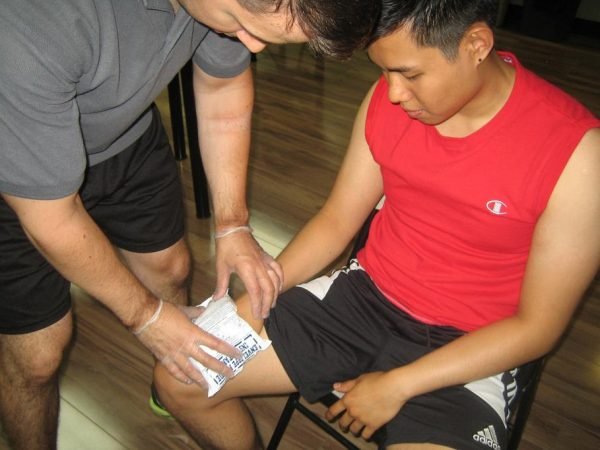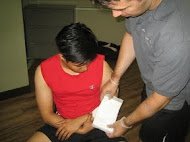FIRST AID PREPAREDNESS: EARTHQUAKES
There is not predicting when earthquakes will occur. The shaking of the tectonic plates of the earth are constantly moving is not the primary cause of earthquakes

FIRST AID PREPAREDNESS: EARTHQUAKES
There is not predicting when earthquakes will occur. The shaking of the tectonic plates of the earth are constantly moving is not the primary cause of earthquakes

First Aid Preparedness: Earthquakes
There is not predicting when earthquakes will occur. The shaking of the tectonic plates of the earth are constantly moving is not the primary cause of earthquakes but rather the breaking and moving of the rocks that occur as a consequence of stresses caused by plate movements. These can occur at any time, thus is it essential to have the necessary first aid kit and first aid training in case an earthquake and other natural disasters can occur.
First Aid Kit for Earthquakes
It is greatly advised to stock up on emergency supplies that can be used in earthquakes and other natural disasters. Enough supplies should last for at least three days and should be enough for everyone. Important medical information and most prescriptions can be stowed in the refrigerator, which also offers protection from fires. Every first aid kit should contain:
Drugs or Medications
- Antibiotic cream or ointment
- Hydrogen peroxide to clean and sterilize wounds
- Alcohol swabs
- Pain medications, both aspirin and non-aspirin tablets
- Anti-diarrheal medications
- Prescription medications
- Eye drops
Dressings
- Triangular bandage and other bandage strips
- Ace bandage
- Rolled gauze
- Adhesive tape roll
- Swabs that are cotton-tipped
Other Essential First Aid Supplies with First Aid Kit
- First aid handbook
- Gloves
- Tweezers and scissors
- Thermometer
- Tissue
- Bar soap
- Paper cups
- Pocket knife
- Safety pins
- Needle (sterilized) and thread
- Instant cold packs
- Sanitary napkins
- Splinting materials
- Blankets
- Portable radio
- Flashlight and extra batteries
- Cash
- Bottled water
- Non perishable food (requires little or no cooking)
- Food and water for pets
- Extra change of clothes
How to Perform First Aid on Victims of Earthquakes
The most common injury that occurs from earthquakes are minor wounds and broken bones. However, other injuries may also occur. The following first aid tips may be used in cases of injuries:
Broken bones
- If there is bleeding, control bleeding by applying firm pressure on the wound using a clean cloth
- If one is trained to do so, create a splint to the area above and below the broken bones. If possible, add pads to decrease discomfort/
- To limit swelling and ease pain, apply ice packs. Do not apply ice directly to the skin instead wrap with a towel or any piece of cloth.
- Treat for shock, if necessary.
- Initiate CPR if there is no pulse detected.

Minor wounds
- If there is available water, run the wound on cool water for 10 to 15 minutes. If possible, clean the wound with antibacterial soap.
- Place antibiotic cream or ointment.
- Cover the wound with gauze to avoid unnecessary dirt or germs from entering the wound.
It is greatly advised to take First Aid Courses to help in preparation for natural disasters such as earthquakes.
Online Sources:
http://www.ga.gov.au/hazards/earthquakes/earthquake-basics/causes.html
http://www.bt.cdc.gov/disasters/earthquakes/supplies.asp
http://www.mayoclinic.org/first-aid/first-aid-fractures/basics/art-20056641
